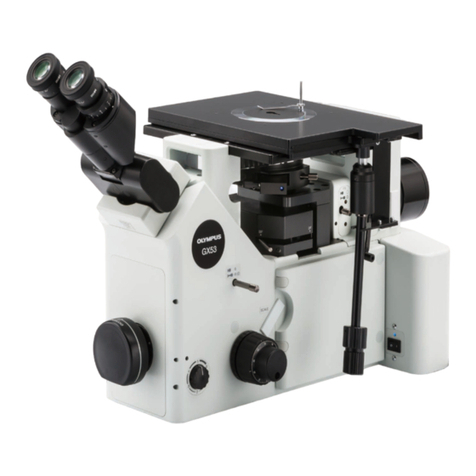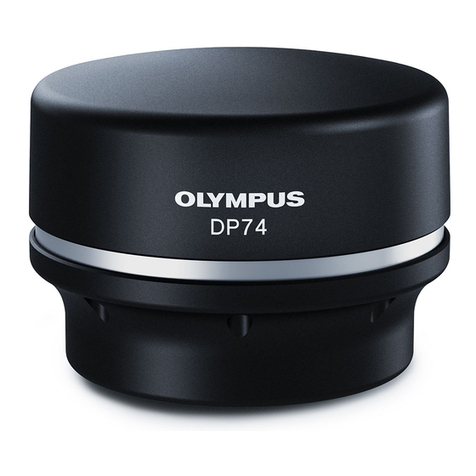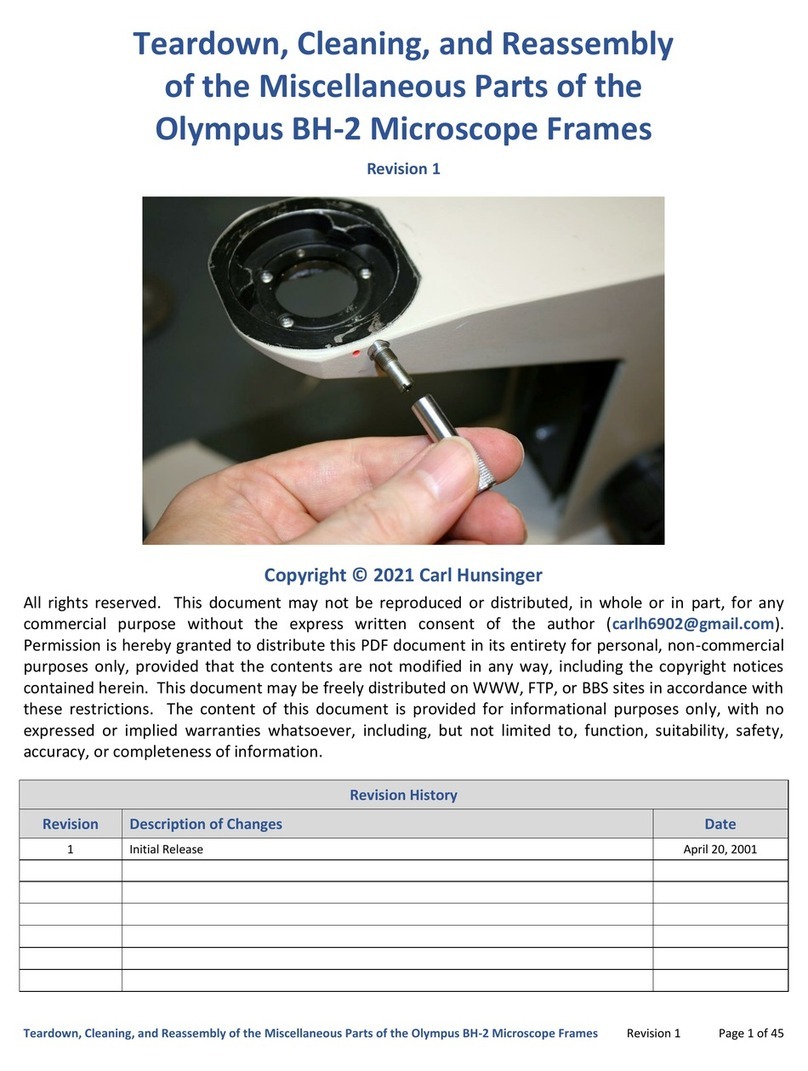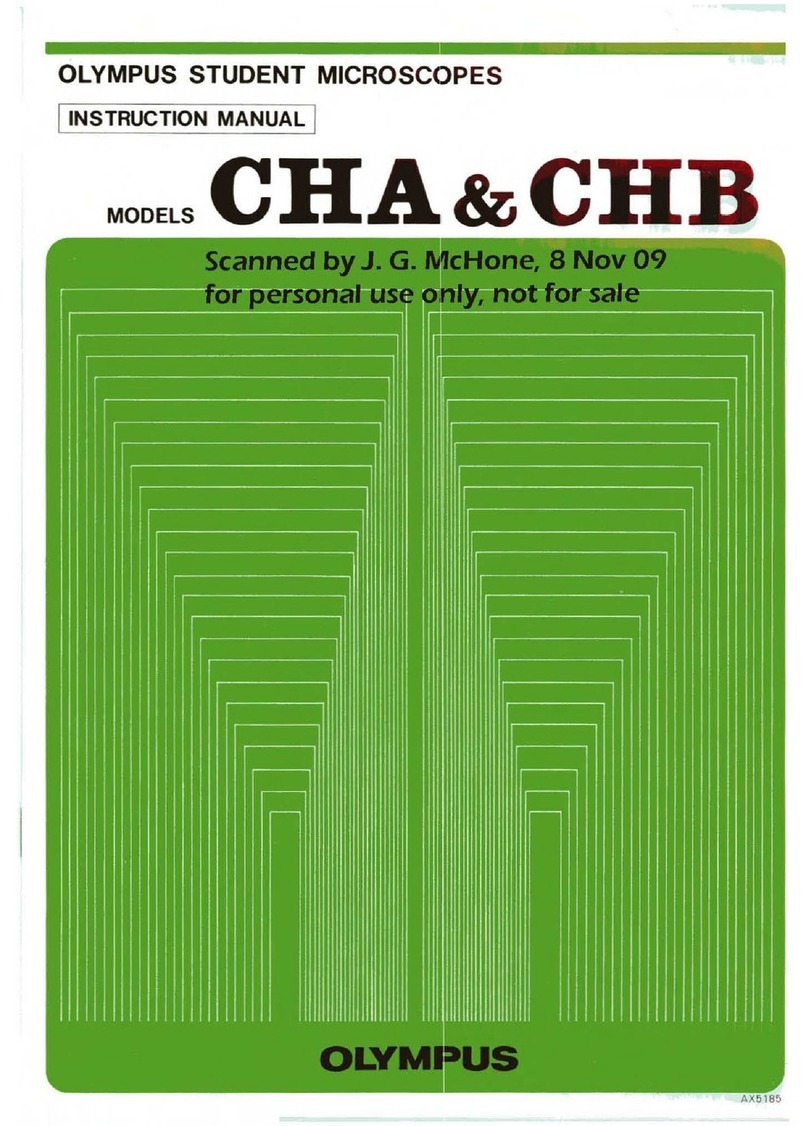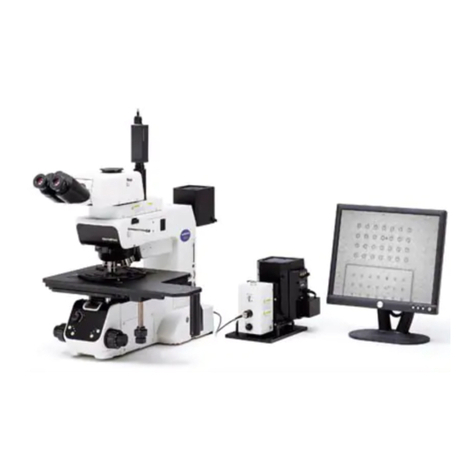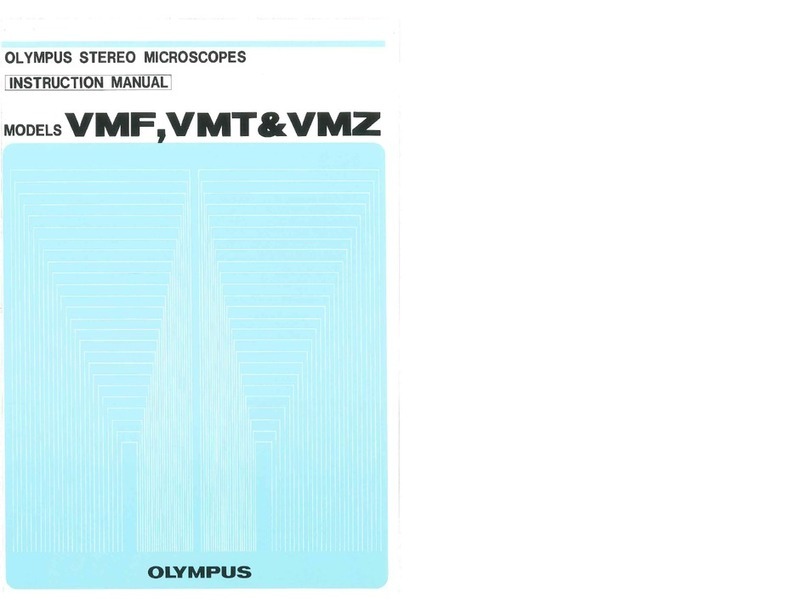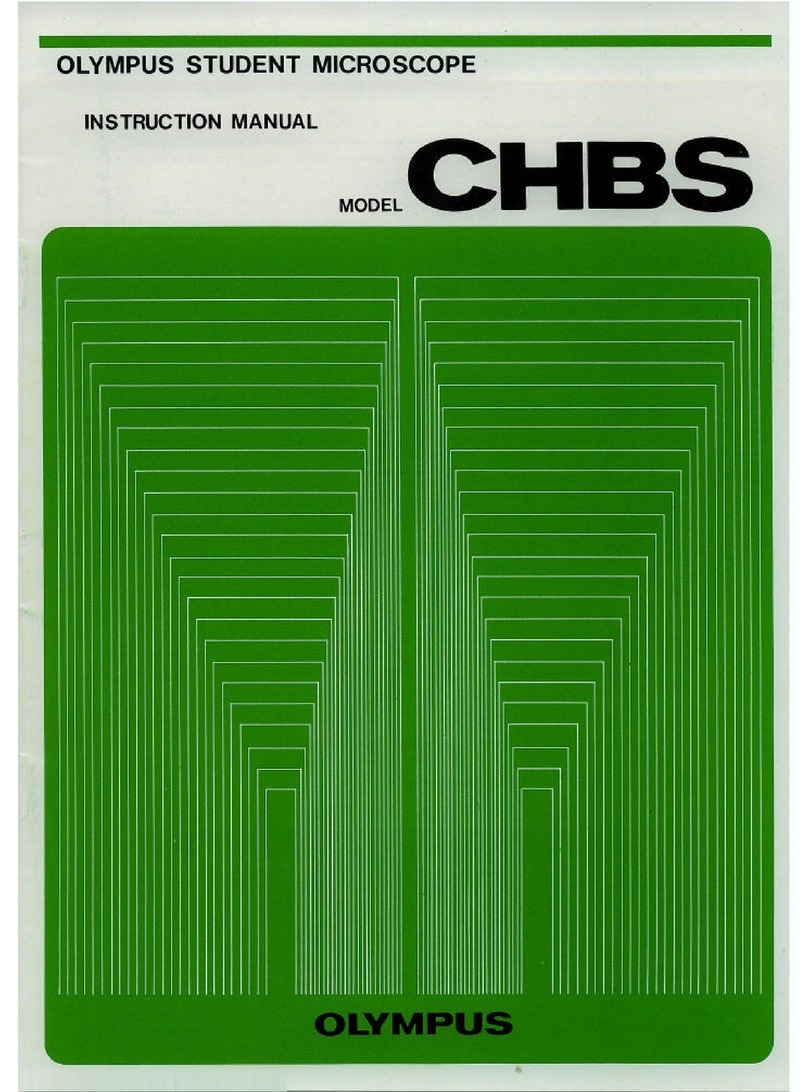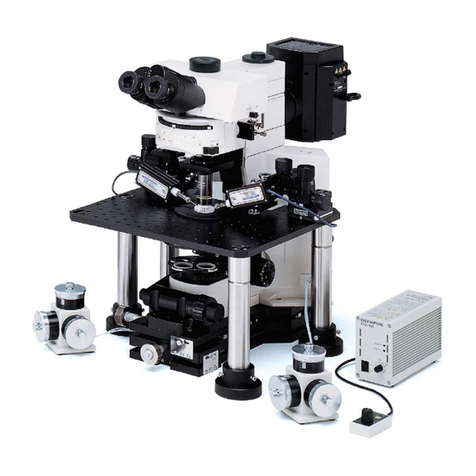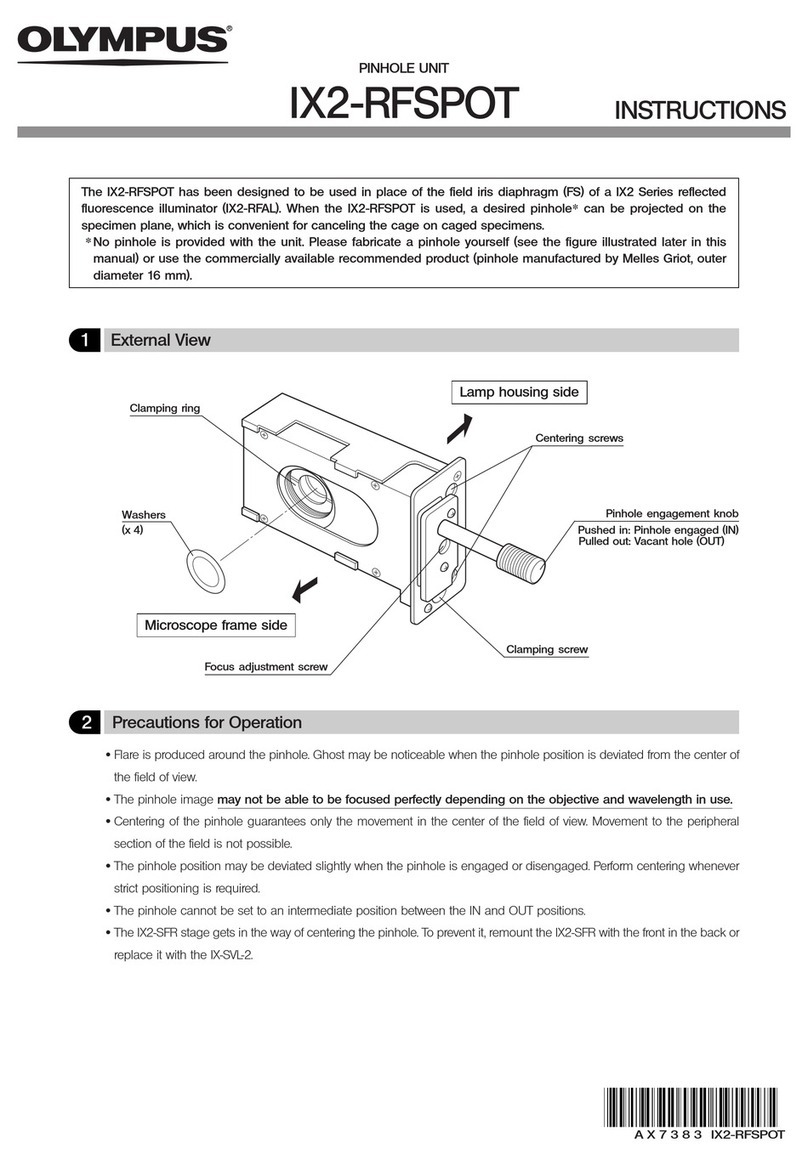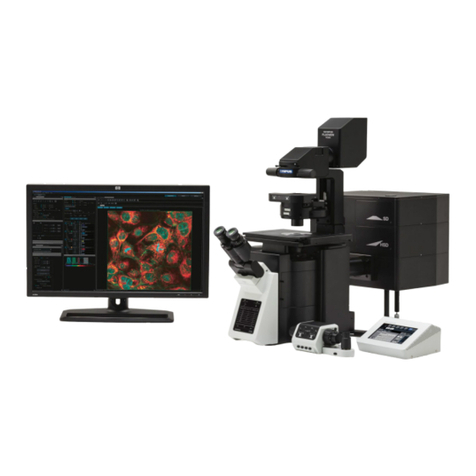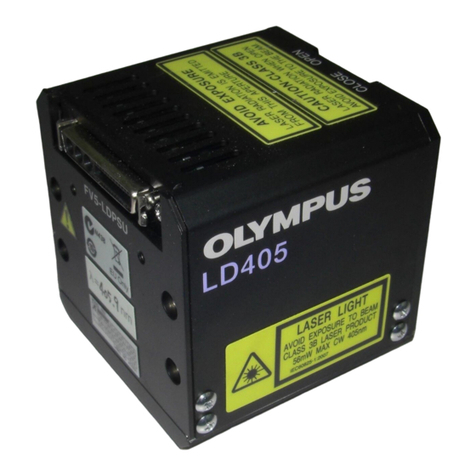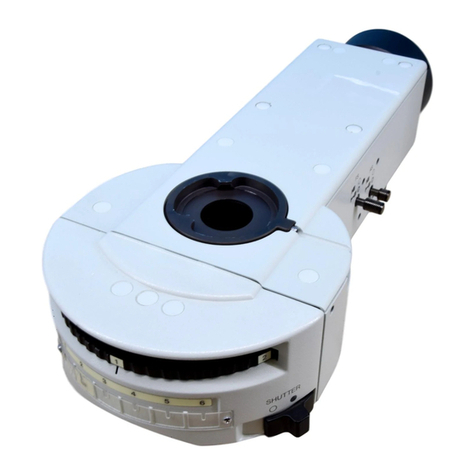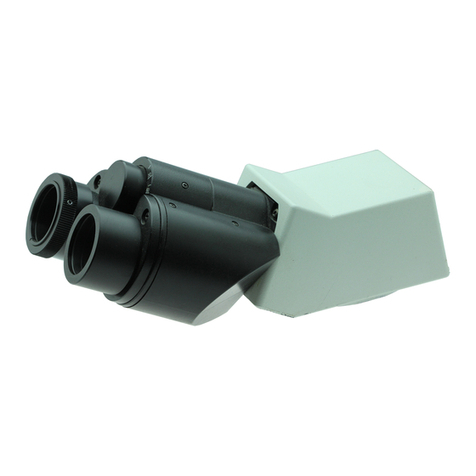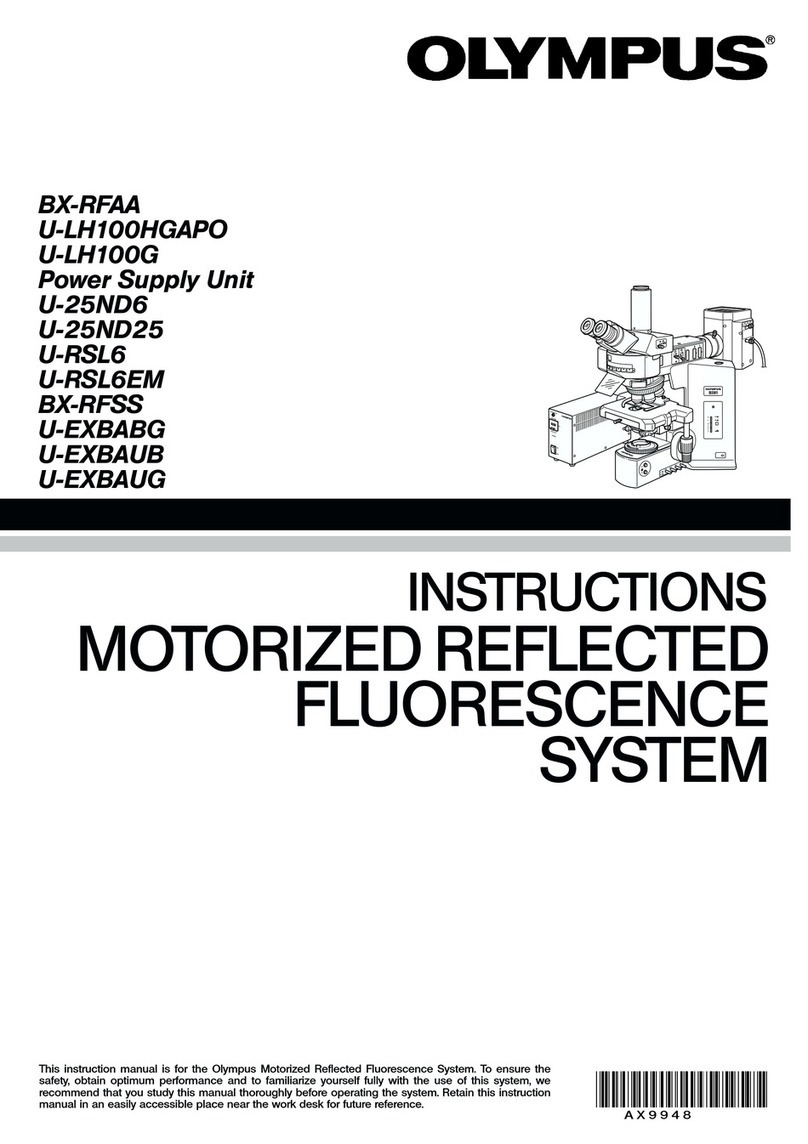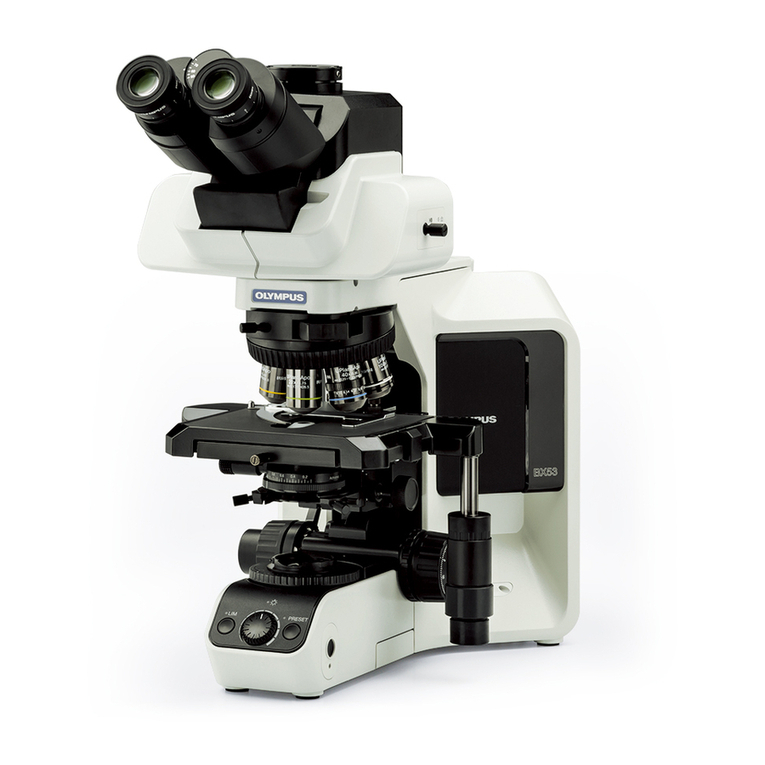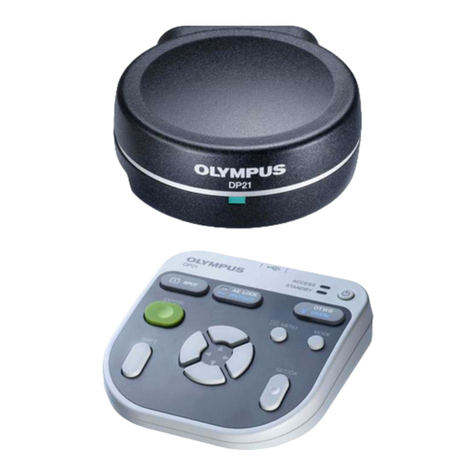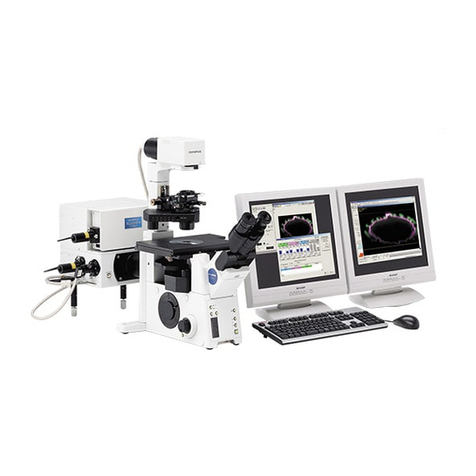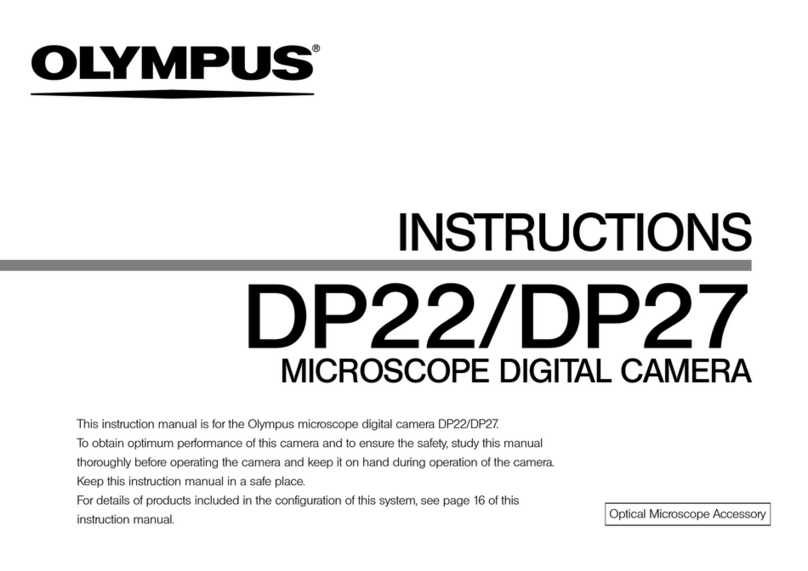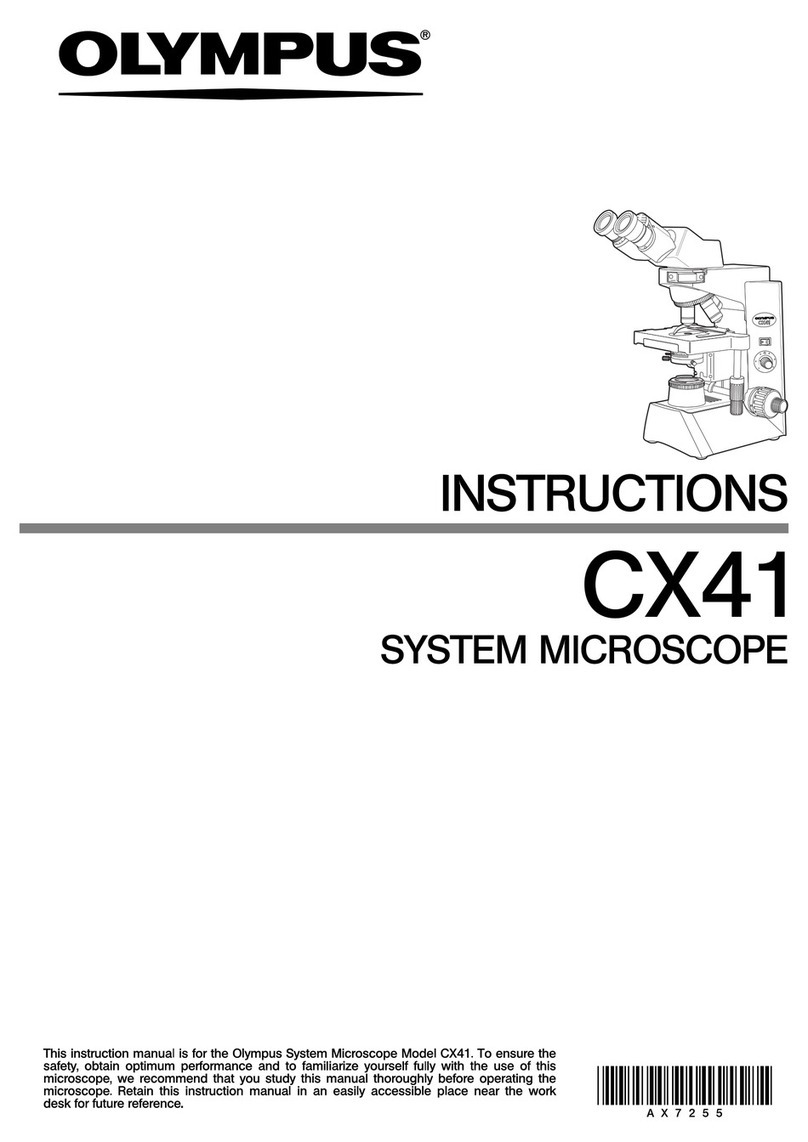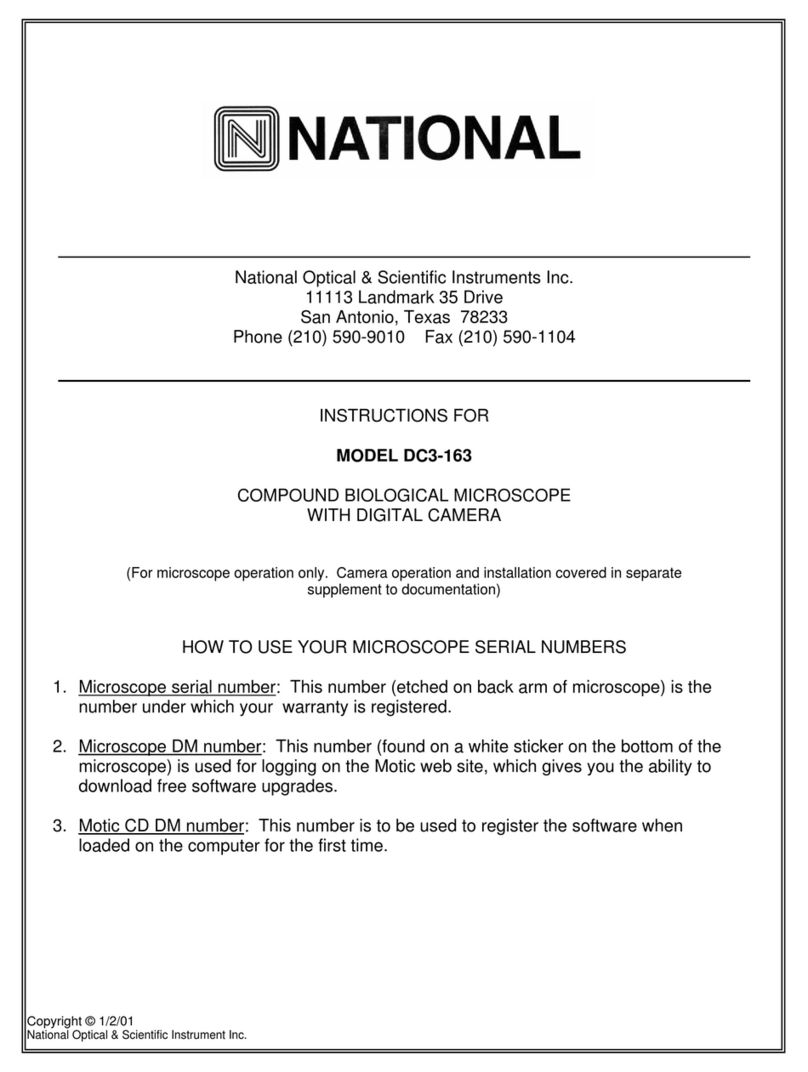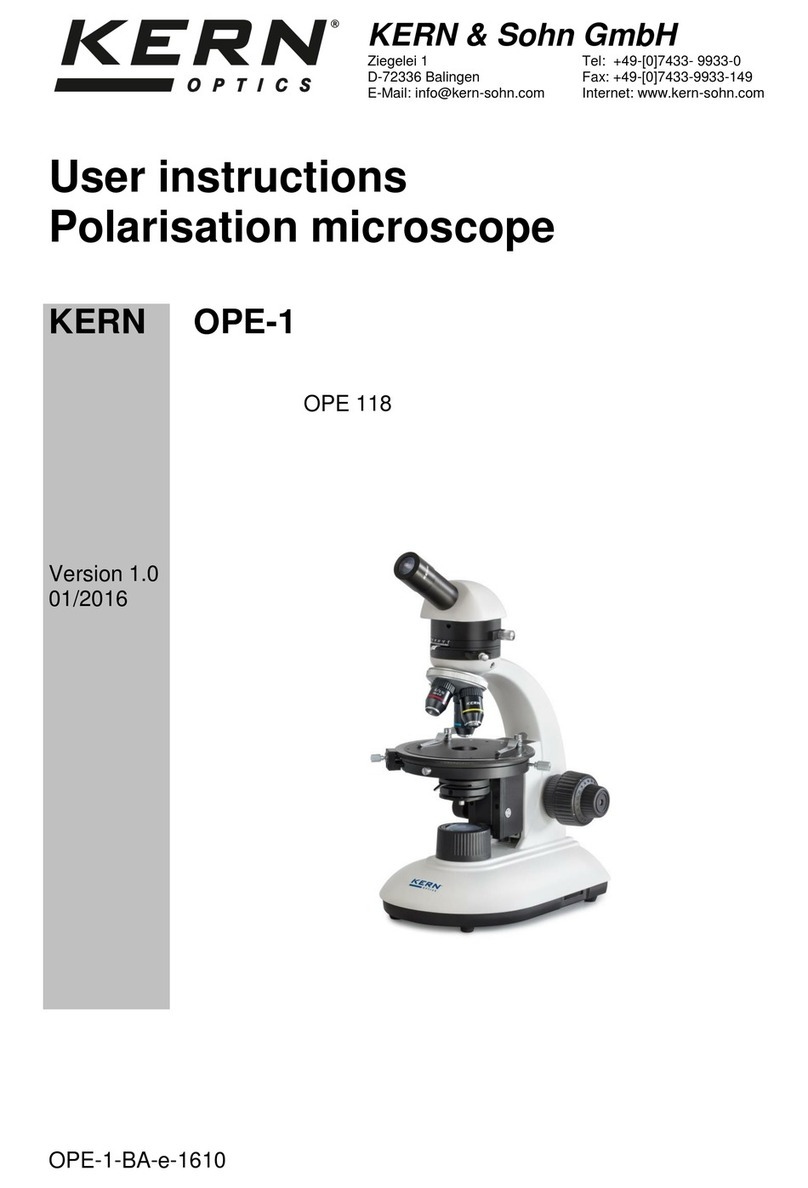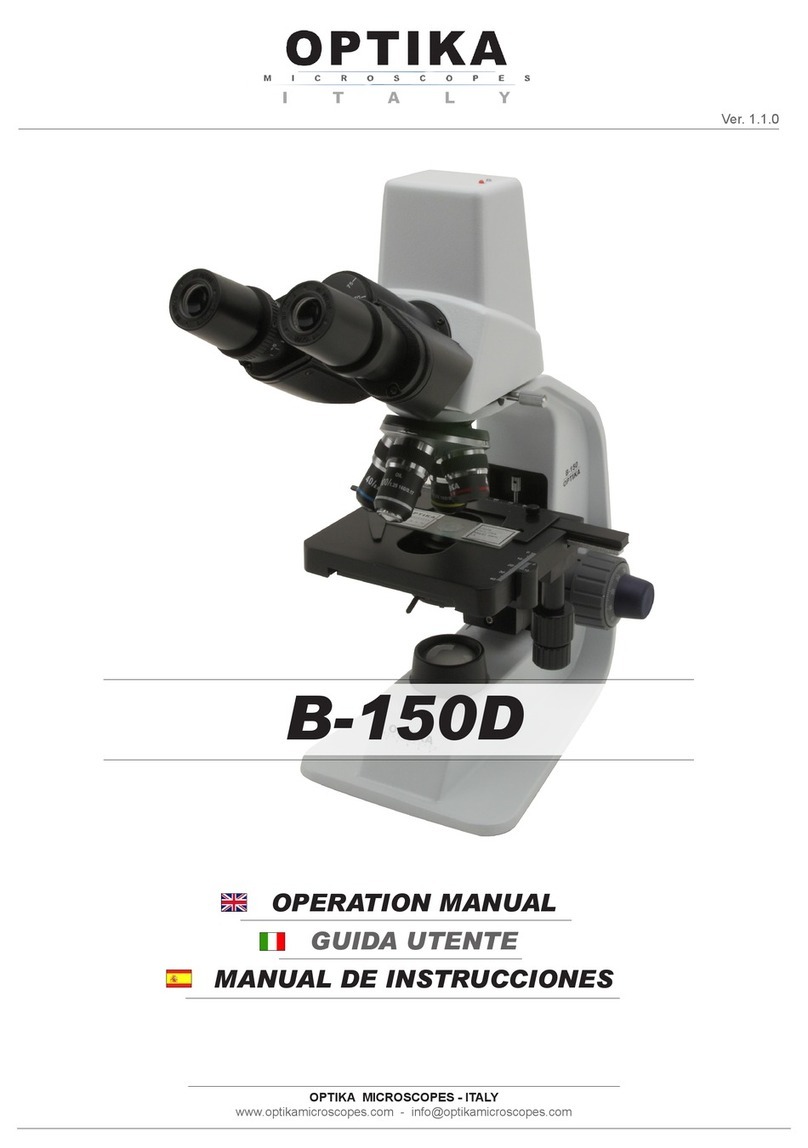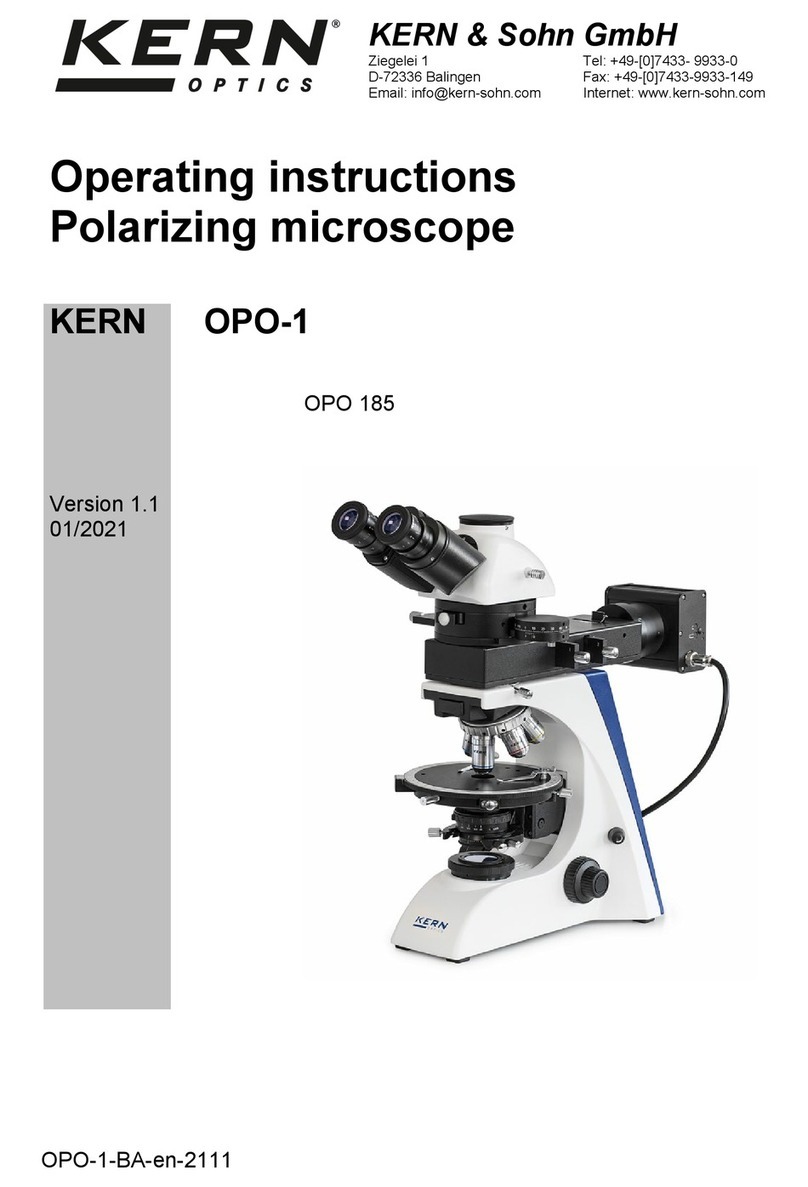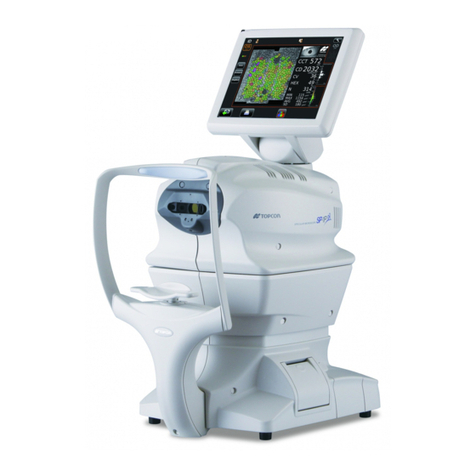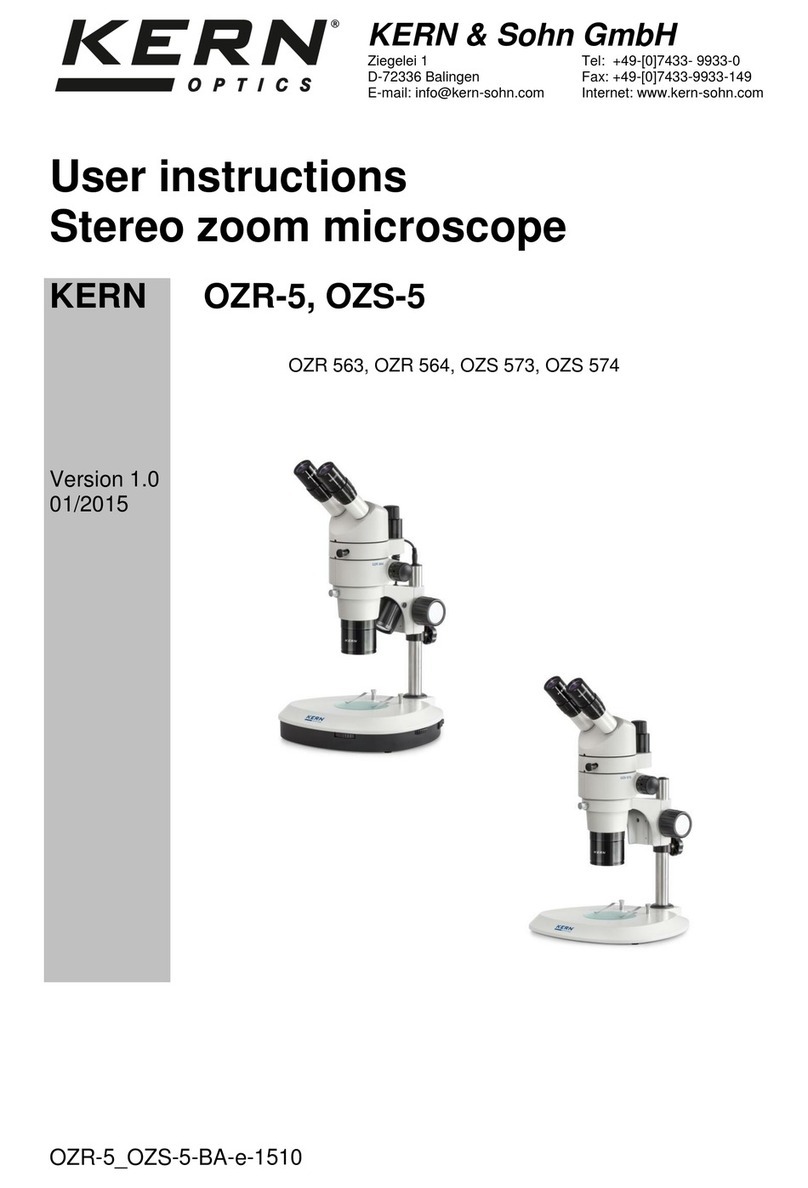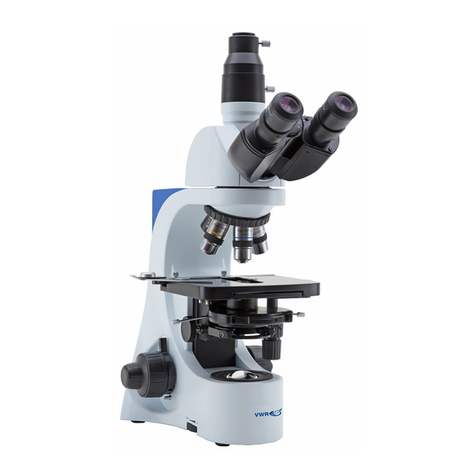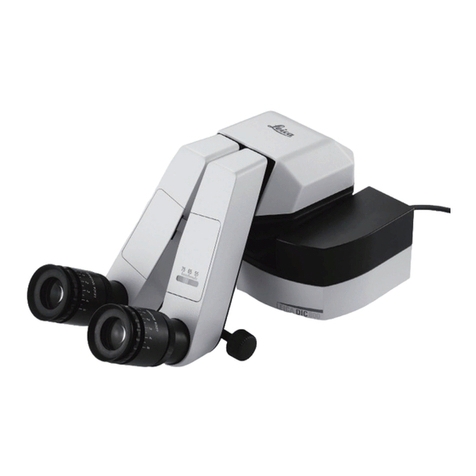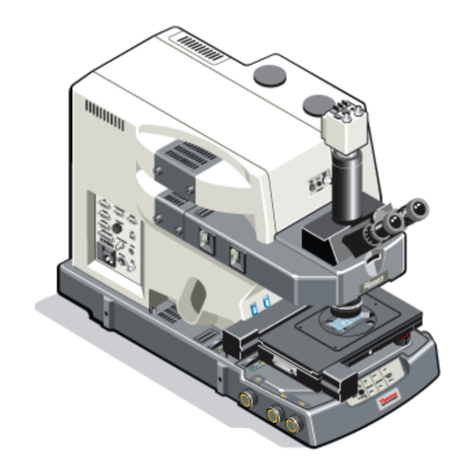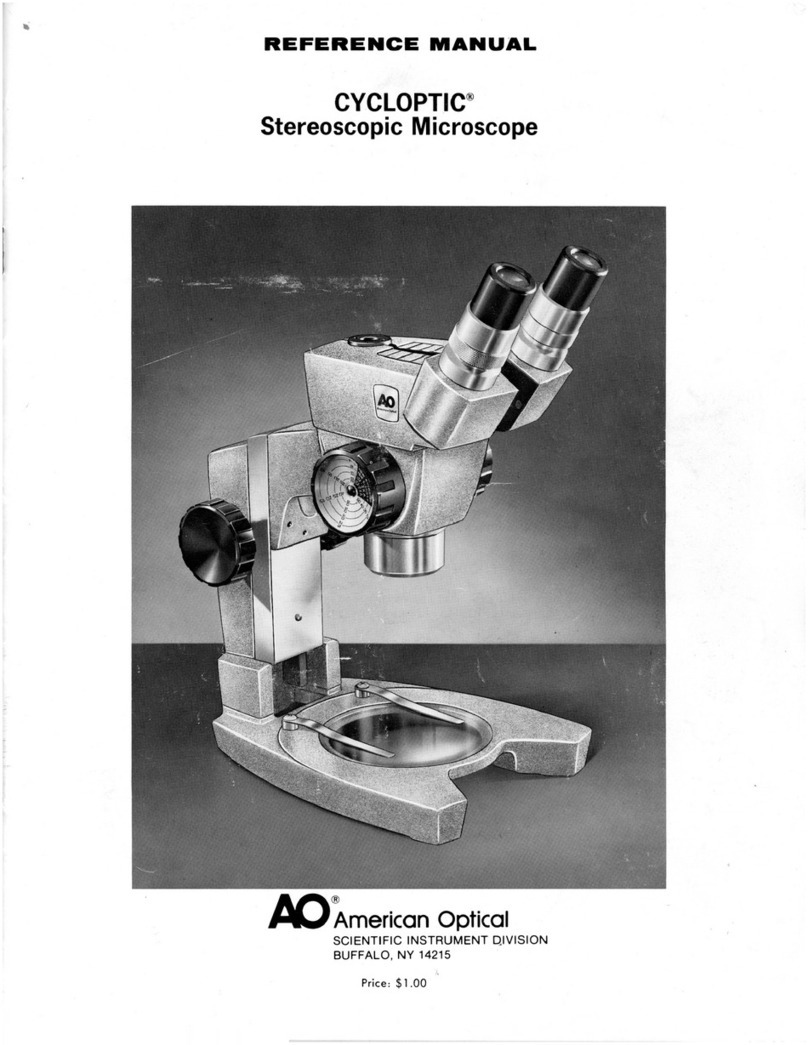1
BX63
SAFETY PRECAUTIONS (Fig. 1)
1. If potentially infectious samples may be observed, use protective gloves or
other protective means to prevent the skin from contacting with samples
directly.
After observation, be sure to clean the portion contacted with samples.
· Moving this product is accompanied with the risk of dropping the
sample. Be sure to remove the sample before moving this product.
· In case the sample is damaged by erroneous operation, promptly take
the infection prevention measures.
· Follow the procedures described in Chapter “Getting Ready” (see
page 4) prior to using the accessories of this product. Otherwise, the
stability of the device will be lost and the dropped sample will cause
the possibility of infection.
· When you maintain the device which may have contacted with
potentially-infectious reagents, be sure to wear the protectors such as
gloves, or clean the device prior to operation.
· Before disposing of device contacted with potentially infectious samples,
be sure to follow the regulations and rules of your local government.
2 Be careful not to have your finger or hand caught by the space between
the revolving nosepiece arm @ and observation tube mount 2(Fig. 1).
3. Install the microscope on a sturdy, level table or bench.
4. Be careful not to tilt the microscope too much. Otherwise, the mobile
parts such as the light path selector knob may move.
5. Never insert metallic objects into the air vents of the microscope frame
as this could result in electrical shock, personal injury and equipment
damage.
6. Always use the power cord provided by Olympus. If no power cord is
provided, please select the proper power cord by referring to the section
“PROPER SELECTION OF THE POWER SUPPLY CORD” at the end of this
instruction manual. If the proper power cord is not used, product safety
performance cannot be warranted.
7. Always ensure that the grounding terminal of the microscope and that of
the wall outlet are properly connected. If the equipment is not grounded,
Olympus can no longer warrant the electrical safety performance of the
equipment.
This microscope employs a UIS2 (Universal Infinity System) optical design, and should be used only with
modules designed for the BX3-series and with UIS2 objectives/eyepieces.
For the applicable modules, please consult Olympus or the catalogues.) Less than optimum performance
may result if inappropriate accessories are used.
Configuration of Instruction Manuals
Since this microscope is expandable to a variety of systems, separate instruction manuals are prepared so
that the user has to read only the manuals according to the user’s own system.
Manual name Main contents
BX63 Transmitted light brightfield observation and touch panel
controller
BX3-CBH/U-MCZ Functions of the Control Box (incorporating power supply) and
the Controller
BX3-RFAA Motorized fluorescence illuminator
BX3-UCD8A Motorized universal condenser
BX3-SSU Scanning stage with ultrasonic
IMPORTANT
Fig. 1
1
2
